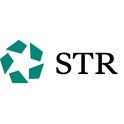HIP: Business expansion probability remains 100%

The Hotel Industry’s Pulse index, or HIP, increased 3.8 percent in July after edging up 2 percent in June, according to economic research firm e-forecasting.com in conjunction with STR.
HIP is a composite indicator that gauges business activity in the United States hotel industry in real-time, similar to a gross domestic product measure for the industry. The latest monthly change brought the index to a reading of 89.9. The index was set to equal 100 in 2000.
HIP's six-month growth rate, which historically has signaled turning points in U.S. hotel business activity, continued to improve. After 20 months of the six-month growth rate being negative, the rate has gone up six consecutive months. In July, the six-month growth improved upon June's growth of 10.8 percent by gaining 17.5 percent. This compares with a long-term growth rate of 3.2 percent. It is useful to benchmark against the long-term growth rate of 3.2 percent because it is the same as the 38-year average annual growth rate of the industry's GDP.
“With the July HIP out, we see that the U.S. hotel industry started Q3 quite strong," said Maria Simos, CEO of e-forecasting.com. "What we have to keep in mind, though, is that HIP is a real-time index that measures hotel activity of the previous month, so while it's good to know how the industry is today, what's a step above is to know the future direction. That's where the HIL, the Hotel Industry Leading indicator, comes into play. The last few months that has gone up and down, a sign that possibly business activity may change direction later this year. My advice is to keep a solid eye on HIL the next few months."
The probability of business expansion remained near the 100 mark in July, as has been the case since the beginning of the year. In July, the expansion probability was at 100 percent, up from the already high 99.9 percent mark reached in June.
The Hotel Industry Pulse Index, or HIP for short, is a hotel industry indicator that was created to fill the void of a real-time monthly indicator for the hotel industry. The indicator provides useful information about the timing and degree of the industry’s linking with the U.S. business cycle for the last 40 years. Simply put, it tracks monthly overall business conditions in the industry, like an industry GDP, and points in a timely way to the changes in direction from growth to recession or vice versa. The composite indicator is made with the following components: revenues from consumers staying at hotels and motels adjusted for inflation, room occupancy rate and hotel employment, along with other key economic factors which influence hotel business activity.
About STR
STR provides premium data benchmarking, analytics and marketplace insights for the global hospitality industry. Founded in 1985, STR maintains a presence in 15 countries with a North American headquarters in Hendersonville, Tennessee, an international headquarters in London, and an Asia Pacific headquarters in Singapore. STR was acquired in October 2019 by CoStar Group, Inc. (NASDAQ: CSGP), the leading provider of commercial real estate information, analytics and online marketplaces. For more information, please visit str.com and costargroup.com.
